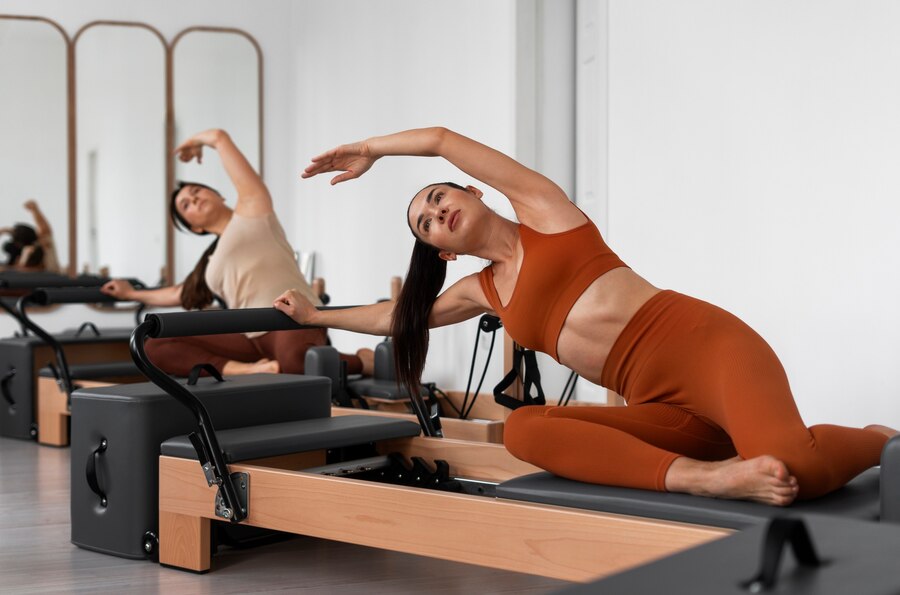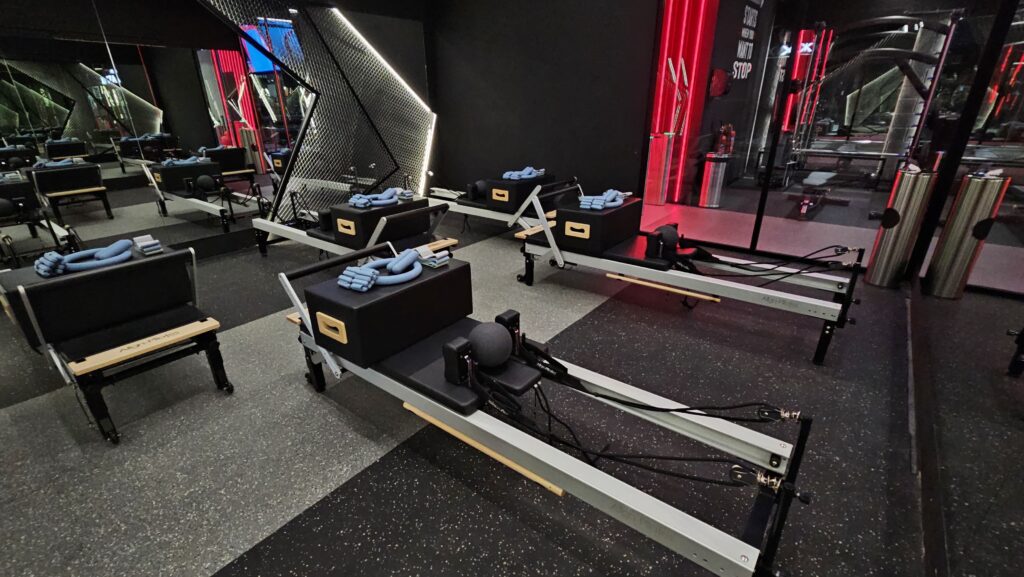Introduction to the Synergy of Pilates and Running
Discovering the Dual Benefits for Athletes
Imagine pounding the pavement during a morning run, your breath steady and your body moving with a rhythm that feels almost second nature. Now, picture that same sense of control and fluidity you experience in a Pilates studio, your focus on aligning each movement with precision and care. You might think these are two separate worlds, but they’re more interconnected than you realize. Running and Pilates share a mutualistic relationship; one enhances your performance in the other, resulting in many benefits that can elevate your athleticism to new heights.
By embracing both disciplines, athletes can enjoy increased core stability, improved flexibility, and a reduced risk of injury. They tap into Pilates’s power of controlled breathing and precise muscle activation, translating into more efficient and effective running sessions. Not only does each practice complement the other, but the combination also promotes a well-rounded approach to fitness, ensuring that both the mind and body are engaged and enhanced through diverse and fulfilling workouts.
“Integrating Pilates into a running regimen offers remarkable benefits beyond traditional strength training. Pilates enhances core stability, improves flexibility, and promotes muscle balance, which are crucial for runners. By incorporating Pilates, athletes can achieve better running form, reduced risk of injury, and faster recovery times. This combination creates a more resilient and efficient runner, making it an invaluable addition to any training program.”
— Dr Jennifer Stone, Sports Physiotherapist and Performance Coach
The Historical Intersection of Pilates and Running
Pilates has only sometimes been on runners’ radar, but the growing understanding of cross-training benefits brought these two activities into a harmonious relationship over time. It may surprise you to learn that the founder of Pilates, Joseph Pilates, was himself an avid athlete who designed his exercises to improve his health and performance. With its ancient roots reaching back to the essence of human physical activity, running naturally focuses on endurance and cardiovascular health.
The historical intersection of Pilates and running occurs much later as athletes seek ways to enhance performance and prevent injury. Researchers and fitness professionals recognized the importance of core strength, flexibility, and mindful movement—hallmarks of Pilates—in running. Since Pilates reinforces the very muscles and movements utilized in running, this pairing became a natural step in the evolution of athletic training. Today, Pilates has firmly established its place in the running community as a complementary practice that runners of all levels turn to for improving overall fitness and longevity in the sport.
Incorporating Pilates into running training programs is a modern concept that has gained popularity. Runners and coaches alike have witnessed the improved performance and reduced injury rates among those who regularly engage in both activities. As we delve deeper into the mechanics and benefits of each, it becomes clear why this historical intersection has led to a synergistic pairing that countless runners now rely on.

Breath Control and Endurance: Breathing Your Way to Better Runs
The Role of Pilates in Mastering Breathwork
Pilates isn’t just a workout for your muscles; it’s a masterclass in breathwork that can significantly enhance your running performance. Deep breathing is one of the foundations of Pilates. When you enter a Pilates class, you’ll quickly learn that every exercise is paired with a specific breathing pattern. This focus on breath is designed to teach you how to harness the power of a deep, diaphragmatic breath, which is crucial for oxygenating your muscles and supporting movement efficiency.
When you learn to control your breath, you can better manage your pace and endurance on the run. This kind of breathing not only ensures a steady oxygen supply to keep fatigue at bay but also plays a role in maintaining rhythm and focus during challenging stretches of your run. Pilates teaches you to be mindful of your breath and use it to power through the easy and hard miles.

From Controlled Breaths to Sustained Paces: Pilates’ Impact on Endurance
Transferring the breath control honed in Pilates to your running stride can transform your endurance. The deep, full breaths practised in Pilates help increase lung capacity, preparing you to maintain a strong and steady oxygen flow during long-distance runs. This consistent oxygenation is critical to staving off fatigue and powering through mile after mile.
Moreover, Pilates’ breathing techniques teach you to use your breath to synchronize with your movements, creating a rhythm that optimizes energy expenditure. With each controlled inhale and exhale, you’re aiding your body in finding a natural and sustainable cadence for your runs. By learning to regulate your breathing, you’re not just surviving the distance; you’re actively enhancing your ability to maintain pace and reduce the energy cost of running.
Regular Pilates practice also conditions your body for the challenges ahead by boosting muscle endurance. This means you’re training your lungs and building muscular resilience that supports better form as your miles add up. Your diaphragm and intercostal muscles become more robust, aiding in improved breathing mechanics and directly influencing your capacity to endure longer and more intense runs.
Imagine feeling the impact of each Pilates class as you find yourself less winded and more capable on your runs, with the stamina to reach new personal bests. Pilates isn’t just a complementary workout—it’s a bridge to unlocking a higher level of endurance in your running journey.
“Incorporating Pilates into my training has been a game-changer for my endurance and overall performance. Pilates strengthens my core and enhances my flexibility and balance, which are crucial for maintaining good form and reducing fatigue during long runs. Focusing on muscle stability and alignment has helped me run more efficiently and recover faster from intense workouts. I highly recommend Pilates to any runner looking to boost their endurance and performance.”
— Samantha Lewis, Professional Long-Distance Runner
Improved Posture and Running Form: Aligning for Success
The Pilates Effect on Runner’s Posture
Pilates works wonders on your running posture by fortifying your body’s powerhouse—the core. A strong core is essential for maintaining an upright stature, especially as fatigue sets in. It supports your torso and keeps you running tall and efficiently. When your core muscles are conditioned through Pilates, they act like a natural brace for your entire body, enabling you to hold a more advantageous posture throughout your run.
This improved posture does more than make you look good; it optimizes your performance. Running with proper alignment reduces the strain on your body, particularly your back, hips, and knees. You become more adept at absorbing the impact each time your foot hits the pavement, making each step safer and more powerful. Furthermore, Pilates emphasizes spinal alignment and teaches you to be aware of your body’s positioning from head to toe. With consistent practice, you’ll notice a better form that translates into your running—a head held high, shoulders relaxed but not slouching, and a stable pelvis, not tilting forward or backward. All these subtleties in your form can prevent common running-related injuries and make those long runs feel less taxing.

Fine-Tuning Running Mechanics through Pilates Techniques
Pilates, with its laser focus on movement quality, is a fine-tuning mechanism for running mechanics. It’s all about the details—the alignment of your joints, the balance of effort across different muscle groups, and the fluidity of your movement. These nuances are meticulously addressed in a Pilates routine, often leading to a revelation in the way you run.
By engaging in mindful movement practices, you become acutely aware of how each part of your body operates individually and as a part of the whole. This awareness is crucial for identifying and correcting imbalances or inefficient motion patterns that could lead to inefficiency or injury while running. Pilates exercises help you develop bilateral symmetry, ensuring that both sides of your body work together. This balance is fundamental to a smooth and injury-free running gait.
Creating a Balanced Workout Schedule
Integrating Pilates into a Running Regimen
You’ve got your running routine down to a science, but adding Pilates may leave you wondering how to balance it all. Worry not; integration is critical here. Start by gradually introducing Pilates into your workout schedule—once a week is an excellent initial frequency. This allows you to experience how Pilates affects your body without overwhelming it. Assess how your muscles respond, particularly after intense running workouts. If you’re feeling recharged and invigorated, consider upping your Pilates sessions twice weekly.

Planning Pilates Sessions Around Running Workouts
Crafting a synergistic Pilates and running schedule revolves around the principle of balance. Here’s a simple guide to help you create a compelling and harmonious workout plan.
Begin your week by focusing on distance running at a comfortable pace. Complement this with a short Pilates session in the evening to reinforce core strength and stretch out the day’s work. A rest or active recovery day should follow, including gentle stretching or a leisurely walk to allow your body to recover.
Schedule your Pilates sessions afterwards or separately on days designated for high-intensity running workouts. This ensures you’re not consecutively exhausting the same muscle groups. If you’re preparing for a race, adjust the intensity and frequency of your Pilates workouts to support your running goals, using these sessions for active recovery and to help prevent injuries. Remember, at least one full rest day or an active recovery day per week is essential to let your body recuperate fully. With thoughtful planning and attentive self-monitoring, your Pilates sessions will dovetail seamlessly with your running workouts for holistic fitness development.
